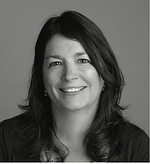Columbia Appoints First Woman to Direct Lamont
Columbia University has appointed Dr Maureen Raymo Interim Director of Lamont-Doherty Earth Observatory. Mo, as she is known to friends and colleagues, is one of the world’s leading oceanographers and climate scientists and the first woman scientist to head Lamont.
Dr Raymo was raised in Easton, Massachusetts. Her father taught college physics and wrote popular science books, her mother taught children with learning disabilities. She grew up watching ocean explorer JacquesCousteau on TV. In an extensive article on Dr. Raymo in The New York Times (July 10, 2020), she recounts, “I can’t remember a time I didn’t want to be an oceanographer.”
After graduating from Brown University, she headed to Lamont where she earned a PhD in 1989. In an important paper she wrote with scientists William Ruddiman and Philip Froelich in 1988, she proposed that removal of carbon dioxide from the atmosphere by rock weathering in the Himalayas caused the global ice ages. She returned to Lamont in 2011 as director of the Core Repository, which houses the world’s largest collection of deep-sea sediment cores.
The NY Times states, "Her scientific work has established Dr Raymo as one of the most influential earth scientists of her generation, with many and varied areas of research that include the great cycles of planetary heating and cooling.” As a research professor at Boston University, Raymo came up with an explanation for why ice ages ebbed and flowed more quickly between 3 million and 800,000 years ago, arriving every 41,000 years instead of every 100,000 years as they do today. Raymo thought about how expanding ice cover in Antarctica, coupled with cyclical changes in the direction of Earth’s rotating axis, might alter the pacing of ice ages. In a 2006 paper in Science, she proposed that the Antarctic ice sheet was more dynamic in the past than generally accepted. “Our current understanding of the timing and pace of past ice ages can be traced to Raymo’s intellectual leadership and sheer determination,” said climate scientist Peter deMenocal, a colleague in Columbia’s Department of Earth and Environmental Sciences. “Her work remains the gold standard on these questions.”
“She is one of the foremost and influential figures in the last 30 years,” said James Scourse, a marine geologist at Bangor University in Wales. In 2014 she was awarded one of geology’s oldest and most coveted prizes: the British Wollaston Medal, the first woman to win in the prize’s 183-year history. She joins Charles Darwin and climatologist Sir Nicholas Shackleton.
Recently, Raymo has worked to establish how high the seas rose about 3 million years ago when carbon dioxide levels were similar to today’s—collapsing ice sheets may have driven sea levels anywhere from 30 feet to 130 feet higher. Armed with GPS, Raymo and her colleagues have trekked to Australia, Italy, South Africa, the eastern U.S. seaboard and Patagonia to measure past sea-level high stands.
A frequent commentator in documentaries and news stories, Raymo is viewed by some as a face to the recent progress women have made in a field still dominated by men. Throughout her professional life Dr Raymo has been proactive in supporting diversity and inclusion in the sciences. She recounts experiencing discrimination in her career. “I’ve been treated like a secretary by older scientists on more occasions than I care to remember” and says it is important “to get into a position where you can change things.” “I’m going to spend the next months doing a lot of listening” she tells The Times.



